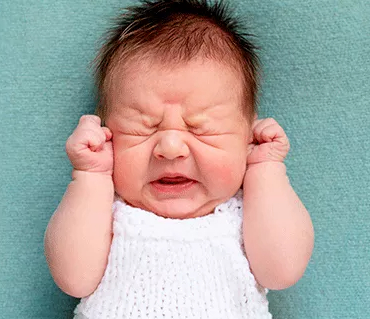How to detect and treat otitis in infants?


Otitis in infants occurs when there is inflammation in the ear, either with or without infection. It is characterized by being very annoying, which increases the child's irritability, especially at night.
Otitis occurs when the baby's ear becomes inflamed, usually due to an accumulation of mucus that can simply cause inflammation or even infection. Otitis is characterized by being very painful, causing excessive irritability in the child, who in most cases cries inconsolably.
It is very common for these otitis to occur during or after a cold in which the body has generated a lot of mucus that has no place to expel, so having occasional otitis is quite common. However, the problem comes when they become repetitive otitis in which the child oozes pus or mucus from the ear, as this could lead to long-term hearing loss. In these cases, an otolaryngologist will evaluate the option of carrying out a small surgical intervention to reduce the child's vegetations or place drainage tubes in the eardrum.
How to detect otitis in infants

When babies are very young and are not able to verbalize if they feel pain, they express it through crying. However, to differentiate it from crying caused by other reasons, you should look to see if they also touch their ear, have a fever or ooze pus or mucus from the ear.
Usually, the pain is worse when the child is lying down, as the child's natural physiognomy causes mucus from the throat to travel to the ear area. So the symptoms will improve when the child is sitting up.
Treatments for otitis in children
Otitis, especially in children, has different types of treatment. It will depend on whether the ear inflammation is accompanied by an infection or there is simply accumulated mucus without causing infection. In both cases it will be necessary to see a pediatrician for diagnosis.
If the otitis is accompanied by infection, the baby will present fever and/or discharge from the ear and it will be necessary to administer an antibiotic. On the other hand, if there is only inflammation and when the child is sitting up the pain subsides, no specific treatment for otitis will be necessary.
Surgical intervention: vegetation reduction or drainage
When otitis is repetitive, the otolaryngologist should be the one to evaluate the case, since it could generate a hearing loss in the long term. Depending on the case, the specialist may recommend a small surgical intervention that includes:
- Passing a small tube through the eardrum so that the accumulation of mucus always drains through the same hole. In this way, it will be avoided that in each episode of otitis a different place of the eardrum is perforated, causing stiffness and hearing loss in the long run.
- Reduce vegetations, a mass of tissue located behind the nasal passage that grows to prevent the entry of bacteria that we inhale and swallow. When this mass grows, the ducts that travel to the ear are less ventilated, generating greater pressure and accumulation of mucus that ends up causing otitis.





























